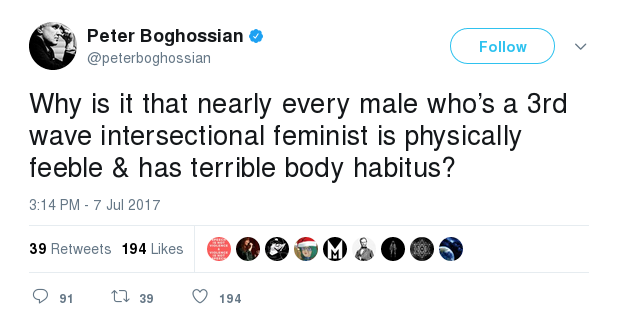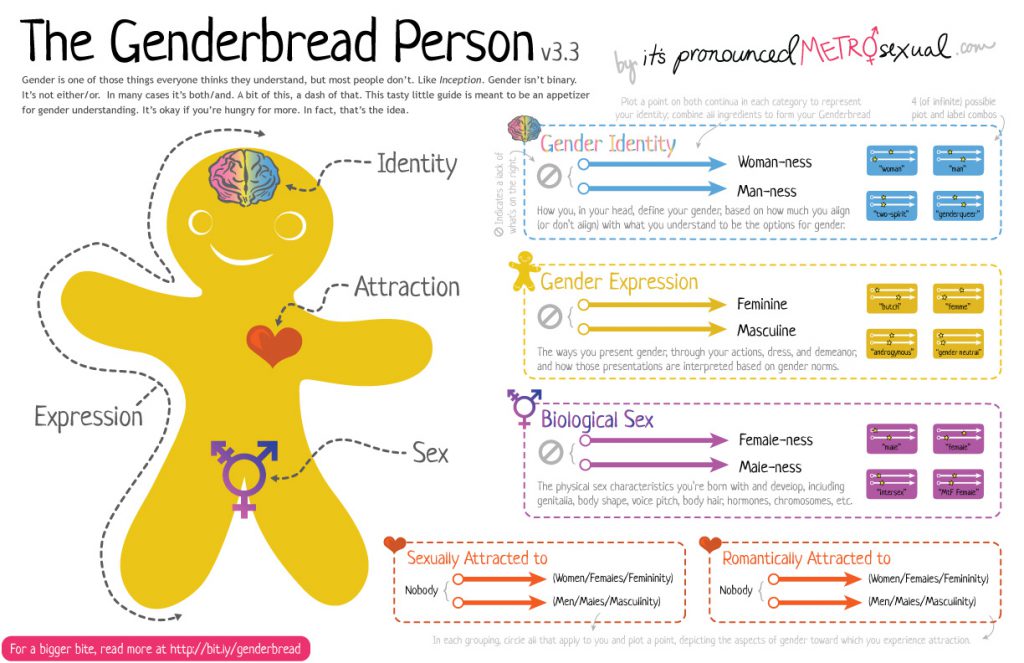Ever read a policy document? They have a pretty simple structure, where the problem is identified and then solutions are proposed. After a while, you start to notice a tight bond between problem and solution that extends beyond policy papers. For instance, trans Canadians didn’t enjoy the same legal rights as cis Canadians, so we passed a law fixing that. Eliminating or reducing gender-based discrimination against trans Canadians is a much more complicated problem, as it consists of multiple forms of bigotry from many different actors, and the solution is equally more complicated. Simple problems tend to have simple solutions, and complex problems tend to have complex solutions.
On top of that, when you describe the problem well enough the solution becomes obvious; when the problem is vague, the solution is vague too. Trans Canadians lack legal rights? Give them legal rights. Trans Canadians are discriminated against? We could dream up a thousand solutions to that, but until we get more detail we’ll have no idea which solutions are effective or counter-productive.
This equivalence is an excellent heuristic: if we spot someone outlining a complicated problem but proposing a simple solution, we’ve got good reason to suspect something fishy. Let’s try this on Carl Benjamin’s hilarious petition.
Social justice has become scientifically illiterate, logically unsound, deeply bigoted and openly supremacist. Social justice professors are indoctrinating young people into a pseudoscientific cult behind closed doors that is doing damage to their health, education and future. …
Walk with me through this. “Social justice” is a huge umbrella that encompasses anti-poverty, street harassment, body positivity, and ageism activism as well as a thousand topics more. To Benjamin, all of these forms of activism suffer from an epistemic deficit or irrational bigotry, to varying degrees. Assuming he’s correct, what would the solution look like?
We know how to deal with misunderstandings or ignorance: education. Specifically, we’d need a public awareness campaign, much more comprehensive than what’s come before. Those only work when they come with clear, concrete instructions, so vague assertions of “be more logical” or “don’t discriminate” aren’t good enough. You’d have to generate hundreds, perhaps thousands of messages to overcome the significant heterogeneity of the target audience. Benjamin’s vague handwaving about science and logic isn’t nearly enough information to get started, you’d need massive levels of consultation with the affected branches of social justice to fill in the details. All of this would need funding, otherwise it fails before it begins. You’d also have to watch for any political roadblocks, it’d do no good to gather up the funding and information in order to have the idea squashed by someone in power.
But notice that this all very vague; the same solution would apply to getting more people to vaccinate, or quit smoking. We need a lot more information before we could put anything concrete into action. The vagueness in the problem description is reflected in my solution. But what is Benjamin’s proposed solution?
… To clarify, we are calling for the teaching of social justice courses in universities to be temporarily suspended. What follows is up for debate, but as it stands now, social justice is causing far more harm than good and it must be halted and reassessed.
Shutting down university courses is much too simplistic, given that much if not most social justice happens outside of universities. There is a little vagueness: what qualifies as a “social justice” course? Social work? Anthropology? Psychology? History? That bit about what comes next sounds like a threat, like he’s going to make the shutdown permanent. Still, we could implement this by merely sitting Benjamin down in front of a course list. Compared to my solution, it’s remarkably simple and precise.
Complex problem, simple solution. So where’s the fish? The most obvious one is that Carl Benjamin is ignorant, a fish with abundant evidence.
He might have a hidden motive, though. Problem/solution complementarity provides us with a tool that may uncover it: if the problem determines the solution, then the solution might link to the problem. This threatens to affirm the consequent, so we can’t guarantee that what we catch is what Benjamin is secretly up to, even if he genuinely is hiding something from us. Still, we can sketch the outlines of what sorts of problems his solution could solve.
Publicly-funded universities are the primary source of non-partisan research into the troubles our society faces. Some non-government organizations do similar work, but it is much easier to dismiss them as partisan. It speaks volumes when non-government organizations try to disguise their partisanship by leeching off the trust we grant universities, academia has accumulated a tonne of it over the years. The research they generate, then, is vital if we hope to resolve our society’s problems.
Shutting social justice courses down then benefits the people who profit from the flaws in our society: the bigots. The privileged. Wannabe dictators. That might be Benjamin’s hidden fish, or there may be another fish that benefits from shuttering some university courses, or he may not have a fish at all, or he may not realize he’s holding one. Whatever the case, it’d be tough to find anything more loopy than Carl Benjamin’s petition.
The problem is epistemological, political, ideological, and ethical and it is profoundly corrupting scholarship in the social sciences and humanities. The center of the problem is formally termed “critical constructivism,” and its most egregious scholars are sometimes referred to as “radical constructivists.” Expressing this problem accurately is difficult, and many who’ve tried have studiously avoided doing so in any succinct and clear way. This reticence, while responsible given the complexity of the problem and its roots, has likely helped the problem perpetuate itself.
This problem is most easily summarized as an overarching (almost or fully sacralized) belief that many common features of experience and society are socially constructed. These constructions are seen as being nearly entirely dependent upon power dynamics between groups of people, often dictated by sex, race, or sexual or gender identification. All kinds of things accepted as having a basis in reality due to evidence are instead believed to have been created by the intentional and unintentional machinations of powerful groups in order to maintain power over marginalized ones. This worldview produces a moral imperative to dismantle these constructions.
Surprise! Helen Pluckrose, James Lindsay, and Peter Boghossian manage that impressive feat. I’ve already pointed out their problem is nonsensical, so this time I’ll point out its impossible to steel-person. To understand “critical” and “radical constructivism,” you first need to know what “constructivism” is.
The premises of constructivism as an epistemology are:
- Knowledge is constructed, not transmitted.
- Prior knowledge impacts the learning process.
- Initial understanding is local, not global.
- Building useful knowledge structures requires effortful and purposeful activity.
The constructivist perspective is clearly divergent from earlier views of education that presumed we could put or pour information directly into a student’s head. Starting from constructivism, real learning can occur only when the learner is actively engaged in operating on, or mentally processing, incoming stimuli. Furthermore, the interpretation of stimuli depends upon previously constructed learning.
The next leap: “Radical constructivism does not deny an objective reality, but simply states that we have no way of knowing what that reality might be.” When I see red, I’m not directly experiencing electromagnetic waves but instead a complex set of neural impulses in my brain. This is trivial to prove, but as a corollary it implies that what I think is reality may not be “real;” in other words, radical constructivism proposes that I might be mistaken. From there we jump to “cultural constructivism,” which adds the existence of “cultural influences, including custom, religion, biology, tools and language.” Our mental models are influenced by culture and society, and we may pass down “myths” or false statements of fact shared by multiple people. From there, it’s a short hop to “critical constructivism:” myths should be actively hunted down and eliminated.
How the heck do you steel-person the idea that we do not hold false beliefs? How do you oppose the idea that any of our society is socially constructed, when the only way I can even convey that concept to you is to use an ever-shifting construct our society created?! We’re in the same place we were with Benjamin’s problem description, only worse. While Carl Benjamin’s petition is a mere three paragraphs long, Boghossian and friends drone on for 11,650 words, using volume to bury their misrepresentations.
Radical constructivism is thus a dangerous idea that has become authoritative. It forwards the idea that we must, on moral grounds, largely reject the belief that access to objective truth exists (scientific objectivity) and can be discovered, in principle, by any entity capable of doing the work, or more specifically by humans of any race, gender, or sexuality (scientific universality) via empirical testing (scientific empiricism).
I just debunked that via thirty seconds on Google and a few minutes of reading, a step most people reading their essay won’t take. This fits with the trio’s established pattern of dishonesty. Still, even if their problem description is less coherent than Carl Benjamin’s, they must have a better solution on hand.
What do we hope will happen? Our recommendation begins by calling upon all major universities to begin a thorough review of these areas of study (gender studies, critical race theory, postcolonial theory, and other “theory”-based fields in the humanities and reaching into the social sciences, especially including sociology and anthropology), in order to separate knowledge-producing disciplines and scholars from those generating constructivist sophistry. We hope the latter can be redeemed, not destroyed, as the topics they study—gender, race, sexuality, culture—are of enormous importance to society and thus demand considerable attention and the highest levels of academic rigor. Further, many of their insights are worthy and deserve more careful consideration than they currently receive. This will require them to adhere more honestly and rigorously to the production of knowledge and to place scholarship ahead of any conflicting interest rather than following from it.
Nope! The trio assume that no major university monitors the quality of its scholars, and that once they start they’ll immediately separate out all the academics who assume that myths might exist, give them a stern talking-to, then put them back to work. Apparently, scholars espousing cultural constructivism will never become administrators, and university executives without academic experience will be able to spot cultural constructivism better than academics themselves. And what about the minor universities, which surely outnumber the major ones?
Sorry, that’s all you explanation you get: out of that 11,650-word essay, a mere 376 are devoted to solutions, and the majority of that is spent saying what won’t work rather than what will; my last quote was the entirety of “what will.” Nonetheless, their solution is about as simple as Carl Benjamin’s: ask them what constitutes a major university, hand them a list of academics who are associated to those universities, and then try to convince them not to engage in constructivism.
Which means a similar chain of reasoning applies here, too. Putting academics next to a wobbly yardstick is a great way to pressure them to conform to your whims, as merely decreasing the number of tenured positions may have the same effect. Again we find the people who benefit from society’s problems would also benefit from the proposed solution, but this time we can’t dispel the fishy smell with the ignorance card as easily. Heck, while Carl Benjamin hasn’t got a university education, Boghossian himself has published a paper on constructivism in a peer-reviewed journal. He should know of what he speaks, yet his paper is no more accurate than the essay.
This trio’s effort has a worse problem/solution gap than Carl Benjamin’s petition, and that’s not something to be proud of.




